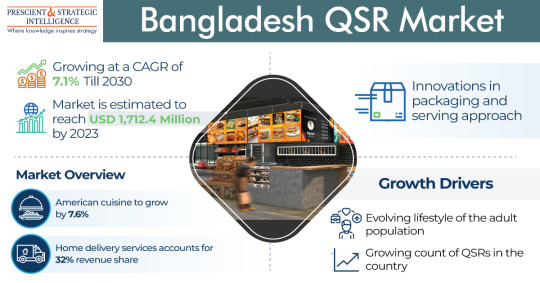#Industry Analysis Reports
Explore tagged Tumblr posts
Text
Future of Power Transformer Market: Innovations and Developments
The global power transformer market was valued at USD 22.83 billion in 2022 and is anticipated to expand at a compound annual growth rate (CAGR) of 7.1% from 2023 to 2030. This growth is primarily driven by the increasing demand for electricity in both emerging and developed countries, coupled with significant investments in infrastructure. As urbanization and industrialization continue to accelerate, the need for reliable and efficient power distribution systems is expected to fuel market growth. Additionally, the rising focus on modernizing the existing energy grid systems and improving energy efficiency will be key factors driving the demand for power transformers over the forecast period.
A major contributing factor to the market's expansion is the growing adoption of smart grid technology. The development of smart grids, which incorporate advanced technologies like smart meters and automated control systems, is creating a significant demand for more sophisticated power transformers. Smart meters, in particular, are integral to the efficient functioning of smart grids as they enable real-time monitoring and management of energy consumption. The widespread push for smart grid development, along with government initiatives to modernize power infrastructure, is expected to have a positive impact on the power transformer market over the next several years.
In addition to smart grids, the power transformer market will be further supported by the rising focus on renewable energy sources and the increasing need to develop transmission networks for remote and off-grid locations. The integration of non-traditional energy sources, such as wind, solar, and hydropower, into the power grid requires efficient power transformers that can manage variable power outputs and ensure reliable electricity distribution.
Gather more insights about the market drivers, restrains and growth of the Power Transformer Market
Phase Insights
The power transformer market can be segmented based on phase type into two categories: single-phase and three-phase transformers. As of 2022, the three-phase transformer segment accounted for the largest share of the market, with a dominant market share of 62.2%. This segment is expected to grow at the fastest rate, with a projected CAGR of 7.2% by 2030.
Three-phase transformers are widely used in various industrial applications due to their high efficiency and ability to handle large power loads. They are commonly used in industries such as manufacturing, mining, petrochemicals, automation, and telecommunications, among others, for both power generation and distribution. These transformers are especially suited for industrial settings because they are more affordable, compact, and lightweight compared to other transformer types, especially when dealing with high power ratings.
In addition to being cost-effective, three-phase transformers offer several operational advantages. They are ideal for low-voltage distribution systems that experience high fluctuations in voltage. Their design allows for superior isolation, common-mode interference suppression, and they can be customized to meet specific end-user requirements. Furthermore, they are particularly effective in environments that require a stable and continuous power supply, making them indispensable for a wide range of applications, including precision machinery and automated systems.
Given their many advantages and the growing number of industries relying on them, three-phase transformers are expected to continue dominating the market and experience robust growth during the forecast period. Their versatile applications and increased adoption across multiple industrial sectors further underline their critical role in the development of power distribution systems worldwide.
Order a free sample PDF of the Power Transformer Market Intelligence Study, published by Grand View Research.
#Power Transformer Market#Power Transformer Market Analysis#Power Transformer Market Report#Power Transformer Industry
2 notes
·
View notes
Text
Smart Specialty Crop Farming Market Research Analysis & Forecast | BIS Research
The Smart Specialty Crop Farming Market is projected to reach $ 6,849.7 Mn by 2033 from $2,304.6 Mn in 2023, growing at a CAGR of 11.40% during the forecast 2024-2033.
#Smart Specialty Crop Farming Market#Smart Specialty Crop Farming Industry#Smart Specialty Crop Farming Market Report#Smart Specialty Crop Farming Market Research#Smart Specialty Crop Farming Market Analysis#Agriculture#BIS Research
2 notes
·
View notes
Text
What Are The Major Factors Driving Retinal Biologics Market Growth?
The Retinal Biologics Market is experiencing a surge in demand, fueled by advancements in eye disease treatments and a growing emphasis on vision health. According to a recent analysis by Future Market Insights (FMI), a leading market research firm, the market is currently valued at an impressive US$22.25 billion in 2022. Looking ahead, the market is projected to witness a remarkable Compound Annual Growth Rate (CAGR) of 11.1% over the next six years. This translates to a staggering market valuation of US$41.92 billion by 2028, highlighting the significant potential of retinal biologics in revolutionizing eye care.The remarkable expansion of the Global Retinal Biologics sector is fueled by advancements in technology, innovative research, and a growing demand for cutting-edge treatments. As the industry continues to evolve, it presents unprecedented opportunities for stakeholders, investors, and healthcare professionals alike.Key Retinal Biologics Market Insights:
Rising Prevalence of Diabetes-related Eye Disorders and Age-related Macular Degeneration (AMD) The prevalence of diabetes-related eye disorders and age-related macular degeneration is on the rise, underscoring the growing need for innovative solutions within the Retinal Biologics Industry.Substantial Investment in R&D for Biologics in Retinal Disorders The industry is witnessing a significant influx of research and development resources, aimed at advancing biologics for both infectious and non-infectious retinal disorders. This investment underscores the commitment to addressing unmet medical needs.
Emergence of Specific Biologic Molecules as Therapeutic Targets Specific biologic molecules are gaining prominence as highly promising therapeutic targets, offering new hope for patients with retinal conditions.Gene Therapy as a Solution for Monogenic Retinal Illnesses With a growing number of monogenic retinal illnesses, gene therapy is emerging as a pivotal component of the Retinal Biologics Market, presenting innovative solutions for these challenging conditions.
Request a Sample Copy of This Report Now.https://www.futuremarketinsights.com/reports/sample/rep-gb-8663
#The Retinal Biologics Market is experiencing a surge in demand#fueled by advancements in eye disease treatments and a growing emphasis on vision health. According to a recent analysis by Future Market I#a leading market research firm#the market is currently valued at an impressive US$22.25 billion in 2022. Looking ahead#the market is projected to witness a remarkable Compound Annual Growth Rate (CAGR) of 11.1% over the next six years. This translates to a s#highlighting the significant potential of retinal biologics in revolutionizing eye care.The remarkable expansion of the Global Retinal Biol#innovative research#and a growing demand for cutting-edge treatments. As the industry continues to evolve#it presents unprecedented opportunities for stakeholders#investors#and healthcare professionals alike.Key Retinal Biologics Market Insights:Rising Prevalence of Diabetes-related Eye Disorders and Age-relate#underscoring the growing need for innovative solutions within the Retinal Biologics Industry.Substantial Investment in R&D for Biologics in#aimed at advancing biologics for both infectious and non-infectious retinal disorders. This investment underscores the commitment to addres#offering new hope for patients with retinal conditions.Gene Therapy as a Solution for Monogenic Retinal Illnesses With a growing number of#gene therapy is emerging as a pivotal component of the Retinal Biologics Market#presenting innovative solutions for these challenging conditions.Request a Sample Copy of This Report Now.https://www.futuremarketinsights.#institutional sales in the Retinal Biologics Industry#where Retinal Biologics are supplied in speciality clinics and hospitals#will generate higher revenues. In 2018#hospital sales accounted for more than 35% of market revenue.According to the report#retail sales of Retinal Biologics will generate comparable revenues to hospital sales and will expand at an 11.9% annual rate in 2019. Reta#with retail pharmacies generating more money than their counterparts in the future years.Penetration in North America Higher#APEJ’s Attractiveness to IncreaseNorth America continues to be the market leader in Retinal Biologics revenue. According to FMI estimates#North America accounted for more than 46% of global Retinal Biologics Industry revenues in 2018. Revenues in North America are predicted to#continuous growth in the healthcare infrastructure#and a favourable reimbursement scenario.Europe accounted for about one-fourth of the Retinal Biologics market#with Western European countries such as Germany#the United Kingdom#France#Italy
2 notes
·
View notes
Text
Tourism Market: Trends, Growth, and Industry Players
Introduction
The global tourism market is a dynamic sector that continually evolves in response to changing consumer preferences, technological advancements, and global events. As we delve into the current landscape, it is crucial to explore the tourism market size, growth patterns, industry trends, and key players that shape the sector's trajectory.
Tourism Market Size and Growth
The tourism market has witnessed remarkable growth over the past decade. According to the latest data the global international tourist arrivals reached 1.5 billion in 2022, marking a 4% increase from the previous year. The tourism industry's robust growth is attributed to factors such as increased disposable income, improved connectivity, and a growing middle class in emerging economies.

The COVID-19 pandemic, however, significantly impacted the industry in 2020 and 2021. International tourist arrivals plummeted by 74% in 2020, representing the largest decline in the industry's history. As the world recovers from the pandemic, tourism is experiencing a resurgence. The UNWTO estimates that international tourist arrivals will surpass pre-pandemic levels by 2023, emphasizing the sector's resilience.
Tourism and Hospitality Industry Trends
The tourism and hospitality industry is undergoing transformative changes driven by technological advancements and shifting consumer behaviors. One notable trend is the rise of sustainable tourism. Travelers are increasingly prioritizing destinations and businesses that adopt eco-friendly practices. Hotels, airlines, and tour operators are responding by implementing sustainable initiatives to meet the demands of environmentally conscious travelers.
Another trend shaping the industry is the integration of technology. From mobile apps for seamless bookings to virtual reality experiences, technology is enhancing the overall travel experience. The use of artificial intelligence and big data analytics is also becoming prevalent, enabling businesses to personalize services, predict consumer preferences, and optimize operations.
Tourism Industry Players
The tourism market is comprised of a diverse range of players, including governments, international organizations, tour operators, airlines, hotels, and online travel agencies (OTAs). Notable industry players such as Airbnb, Expedia, and Booking. com have disrupted traditional hospitality models, offering travelers a wide array of accommodation options and personalized experiences.
Governments play a crucial role in shaping the tourism landscape through policies, infrastructure development, and destination marketing. Collaborations between public and private sectors are essential to foster sustainable growth and address challenges such as over-tourism and environmental impact.

Tourism Market Analysis
A comprehensive analysis of the tourism market involves assessing key factors such as market dynamics, competitive landscape, and regulatory environments. The Asia-Pacific region has emerged as a powerhouse in the tourism sector, with countries like China, India, and Japan experiencing substantial growth. In contrast, established destinations in Europe and North America continue to attract millions of tourists annually.
The post-pandemic recovery has prompted a shift in travel preferences, with a surge in demand for domestic and outdoor experiences. Travelers are seeking off-the-beaten-path destinations, contributing to the diversification of the tourism market.
Travel and Tourism Industry Outlook
Looking ahead, the outlook for the travel and tourism industry is optimistic. The industry is expected to rebound strongly, driven by pent-up demand, increased vaccination rates, and the easing of travel restrictions. The global tourism market is projected to reach $11.38 trillion by 2027, growing at a CAGR of 6.1% from 2020 to 2027.
In conclusion, the tourism market is a vibrant and resilient sector that continues to adapt to changing circumstances. Understanding the market size, growth trends, industry players, and emerging dynamics is crucial for stakeholders navigating the evolving landscape. As the world reopens for travel, the industry's ability to innovate and embrace sustainable practices will play a pivotal role in shaping its future success.
#market research#business#ken research#market analysis#market report#market research report#travel and tourism sector#travel and tourism market#travel and tourism industry#tourism sector#tourism market trends#tourism market size#tourism market players#tourism market forecast
2 notes
·
View notes
Text
Bangladesh QSR Market Report: Trends, Analysis, and Growth Insights | P&S Intelligence
The value of the Bangladeshi quick-service restaurants market stood at USD 1,712.4 million in 2023, and this number is projected to reach USD 2,653.4 million by 2030, advancing at a CAGR of 7.1% during 2023–2030. This growth can be credited to the developing lifestyle of the adult populace, the increasing count of QSRs in the nation, the growing demand for fast food among the urban populace, and the rising working populace in the city and semi-urban areas of the country.

The demand for easy foods is increasing quickly among customers in Bangladesh, due to the parallel variations in the working and social lives and the mounting habit of dining out. People these days like to socialize over good food, away from the house. Therefore, because of the shortage of time, numerous contemporary nuclear families tend to choose convenient, quick meals over old-style meals.
American cuisine is likely to advance at the highest rate during this decade. This is because of the high requirement for fries, pizzas, and burgers among the young populace as well as the busy lifestyle of adults, which makes a requirement for convenience foods. Furthermore, other cuisines like Italian, Mexican, and Chinese, are also broadly prevalent among Bangladeshi citizens.
Moreover, the rising purchasing power of customers with their increasing per capita income, particularly in Dhaka, has boosted the sale of prepared food from QSRs in this nation. Bangladesh's economy is facing an era of low inflation, rising household income, and speedy progress.
As per the World Bank, Bangladesh has a purchasing power parity of 32.1 LCU per international dollar in 2021, in comparison to 16.3 LCU in 2002, advancing at a 3.63% average annual rate.
Furthermore, people, now, socialize with friends, neighbors, or colleagues, as compared to before for social or business purposes. This led to the increasing consumption of meals in fast food settings, which further boosted the industry.
#Bangladesh QSR Market#Market Report#P&S Intelligence#Fast Food Industry#Trends#Analysis#Growth Insights#Quick Service Restaurants#Market Dynamics#Food and Beverage Market#Market Research#Industry Overview#Competitive Analysis#Regional Analysis#QSR Market Size#Market Outlook#Dining Trends
2 notes
·
View notes
Text

#Market research#market insights#market analysis#market trends#data-driven reports#industry trends#market research firm#market research organization#market reports#business
2 notes
·
View notes
Text
The pea starch market is estimated at USD 165.8 million in 2024 and is projected to reach USD 361.8 million by 2029, at a CAGR of 10.0% from 2024 to 2029, according to a report published by MarketsandMarkets™.
#Pea Starch Market#Pea Starch#Pea Starch Market Size#Pea Starch Market Share#Pea Starch Market Growth#Pea Starch Market Trends#Pea Starch Market Forecast#Pea Starch Market Analysis#Pea Starch Market Report#Pea Starch Market Scope#Pea Starch Market Overview#Pea Starch Market Outlook#Pea Starch Market Drivers#Pea Starch Industry#Pea Starch Companies
0 notes
Text
#Market research services#Consumer insights#Market analysis#Market research companies#Industry research reports
0 notes
Text




#Best Clinical SAS Training Institute in Hyderabad#Unicode Healthcare Services stands out as the top Clinical SAS training institute in Ameerpet#Hyderabad. Our comprehensive program is tailored to provide a deep understanding of Clinical SAS and its various features. The curriculum i#analytics#reporting#and graphical presentations#catering to both beginners and advanced learners.#Why Choose Unicode Healthcare Services for Clinical SAS Training?#Our team of expert instructors#with over 7 years of experience in the Pharmaceutical and Healthcare industries#ensures that students gain practical knowledge along with theoretical concepts. Using real-world examples and hands-on projects#we prepare our learners to effectively use Clinical SAS in various professional scenarios.#About Clinical SAS Training#Clinical SAS is a powerful statistical analysis system widely used in the Pharmaceutical and Healthcare industries to analyze and manage cl#and reporting.#The program includes both classroom lectures and live project work#ensuring students gain practical exposure. By completing the training#participants will be proficient in data handling#creating reports#and graphical presentations.#Course Curriculum Highlights#Our Clinical SAS course begins with the fundamentals of SAS programming#including:#Data types#variables#and expressions#Data manipulation using SAS procedures#Techniques for creating graphs and reports#Automation using SAS macros#The course also delves into advanced topics like CDISC standards
0 notes
Text
In today’s rapidly evolving world, staying updated with ongoing and upcoming trends is crucial for personal and professional growth. Whether you're a business professional aiming to stay competitive, a creative looking for inspiration, or simply someone who enjoys being in the loop, keeping abreast of trends helps you remain relevant and informed. This guide explores various methods to stay updated with trends across different fields and offers practical tips to ensure you’re always on the cutting edge.
#certifications#competitive analysis tools#competitor strategies#conferences#continuous learning#google trends#how to update yourself#industry leaders#industry publications#industry trends#influencers#keep yourself updated#keep yourself updated with latest trends#market research reports#networking events#ongoing and upcoming trends#online courses#professional associations#social listening tools#staying updated#tech news#technology advancements#trend tracking tools#trend watching#upcoming trends#update yourself with ongoing
0 notes
Text
Gain insights into the German automotive market with Foxx. From market statistics to emerging technologies, our resources help you navigate this dynamic industry and uncover valuable opportunities for growth and innovation.
#German automotive market#Automotive industry in Germany#Automotive suppliers Germany#Germany automotive market report#German automotive industry overview#German automotive market analysis
0 notes
Text
Industrial Explosives Market Report: Unlocking the Potential for Growth

Straits Research is excited to announce the release of its latest report on the Industrial Explosives Market, which provides a thorough analysis of market trends, growth drivers, and competitive landscapes.
The global Industrial Explosives Market was valued at USD 9217.41 million in 2024 and is projected to reach USD 14671.15 million by 2033, growing at a CAGR of 5.3% during the forecast period from 2025 to 2033.
Market Dynamics and Trends
The Industrial Explosives Market is poised for significant growth, driven by increasing demand from the mining and construction industries. The market is expected to benefit from the rising adoption of blasting agents and high explosives in various end-use industries.
Request a Sample Report of Industrial Explosives Market
Market Segmentation and Analysis
The Industrial Explosives Market can be segmented into two primary categories:
By Explosive Type
High Explosives
Blasting Agents
By End-User Industry
Mining
Construction
Others
The mining industry is expected to dominate the market, driven by the increasing demand for coal, iron ore, and other minerals. The construction industry is also expected to contribute significantly to the market growth, driven by the increasing infrastructure development projects globally.
Key Players and Competitive Landscape
The Industrial Explosives Market is highly competitive, with several key players operating in the market. Some of the top-performing companies in the market include:
Austin Powder Company
AECI Ltd.
EPC Groupe
Irish Industrial Explosives Ltd.
Maxam Corp.
Keltech Energies Ltd.
Incitec Pivot limited
Sigdo Koppers S.A.
NOF Corporation
Orica Ltd.
Solar Industries India Ltd.
These companies are focusing on expanding their product portfolios, investing in research and development, and strengthening their distribution networks to maintain their market share.
Request a Sample Report of Industrial Explosives Market
Emerging Prospects and Opportunities
The Industrial Explosives Market is expected to benefit from the emerging trends and opportunities, including:
Increasing adoption of digital technologies, such as IoT and AI, to improve the safety and efficiency of blasting operations.
Growing demand for environmentally friendly explosives, such as emulsion explosives.
Rising investment in infrastructure development projects, particularly in emerging economies.
Industry Movements and Developments
The Industrial Explosives Market is witnessing significant industry movements and developments, including:
Mergers and acquisitions: Companies are focusing on consolidating their market share through strategic acquisitions.
Product launches: Companies are launching new and innovative products to cater to the evolving demands of the market.
Partnerships and collaborations: Companies are entering into partnerships and collaborations to strengthen their distribution networks and improve their market reach.
Geographic Analysis
The Industrial Explosives Market can be segmented into several geographic regions, including:
North America
Europe
Asia-Pacific
Latin America
Middle East and Africa
The Asia-Pacific region is expected to dominate the market, driven by the increasing demand from the mining and construction industries in countries such as China, India, and Australia.
Buy Industrial Explosives Market Report here!
Data Insights
The Industrial Explosives Market report provides valuable insights into the market, including:
Market size and forecast
Market trends and analysis
Market segmentation and analysis
Competitive landscape and company profiles
Emerging prospects and opportunities
Industry movements and developments
Geographic analysis
Conclusion
The Industrial Explosives Market Report from Straits Research offers a comprehensive overview of this dynamic industry, emphasizing critical growth drivers, emerging trends, and competitive landscapes essential for stakeholders looking to navigate this evolving market effectively.
For more detailed insights into market dynamics and forecasts that inform strategic decision-making, stakeholders are encouraged to access the full report, which serves as a vital resource for understanding the future trajectory of the industrial explosives market amidst changing consumer preferences and industry standards.
As industries continue to evolve with technological advancements and increasing regulatory demands, understanding these dynamics will be crucial for success in the industrial explosives sector over the coming years.
#Industrial Explosives Market#Industrial Explosives Market Share#Industrial Explosives Market Size#Industrial Explosives Market Growth#Industrial Explosives Market Analysis#Industrial Explosives Market Report
0 notes
Text
Electric Vehicle Fast-Charging System Market to Reach $33.15 Billion by 2033 | BIS Research
As per the BIS Research report, the Electric Vehicle Fast-Charging System Market is projected to reach $33.15 Billion by 2033 from $8.39 Billion in 2023, growing at a CAGR of 14.73% during the forecast period 2023-2033.
#Electric Vehicle Fast-Charging System Market#Electric Vehicle Fast-Charging System Market Report#Electric Vehicle Fast-Charging System Market Research#Electric Vehicle Fast-Charging System Market Forecast#Electric Vehicle Fast-Charging System Market Analysis#Electric Vehicle Fast-Charging System Market Growth#Electric Vehicle Fast-Charging System Industry#Automotive#Automobile#BIS Research
2 notes
·
View notes
Text
Exploring the UAE Lubricants Industry: Trends, Opportunities, and Challenges
The United Arab Emirates (UAE) is a global hub for trade, commerce, and innovation, and its lubricants market is no exception. With a strategic geographical location, a growing industrial base, and a thriving automotive industry, the UAE's lubricants industry is poised for substantial growth. This blog delves into the key trends, opportunities, and challenges shaping the market.
Overview of the UAE Lubricants Market
The UAE lubricants market is projected to reach a volume of 159.81 million liters in 2024 and is expected to grow to 173 million liters by 2026, reflecting a compound annual growth rate (CAGR) of 4.04% over the forecast period (2024-2026).
The UAE lubricants market is a vital segment of the country’s economy, driven by industrial applications, transportation, and marine activities. The demand for lubricants spans across various sectors, including:
Automotive: The increasing number of vehicles on the road has boosted the demand for engine oils, transmission fluids, and other automotive lubricants.
Industrial Applications: Manufacturing, construction, and energy sectors heavily rely on industrial lubricants for machinery maintenance.
Marine Industry: With bustling ports like Jebel Ali and an expansive shipping industry, marine lubricants play a crucial role.
Market Trends
Several trends are shaping the UAE’s lubricants industry:
Shift Towards Synthetic Lubricants: Synthetic and semi-synthetic lubricants are gaining popularity due to their superior performance and extended oil change intervals.
Focus on Sustainability: The industry is witnessing a growing emphasis on eco-friendly and biodegradable lubricants, aligned with global sustainability goals.
Technological Advancements: Innovations in lubricant formulations to meet the demands of high-performance engines and machinery.
Growth of Electric Vehicles (EVs): While EVs require fewer traditional lubricants, there is an emerging market for specialized EV lubricants and coolants.
Key Players in the Market
The UAE lubricants market is competitive, with a mix of international giants and local manufacturers. Some notable players include:
Shell
ExxonMobil
TotalEnergies
ADNOC (Abu Dhabi National Oil Company)
ENOC (Emirates National Oil Company)
These companies are investing in R&D, expanding distribution networks, and offering tailored solutions to cater to diverse customer needs.
Opportunities in the UAE Lubricants Market
Strategic Location: The UAE’s position as a gateway between Asia, Europe, and Africa provides lucrative export opportunities.
Growing Industrial Base: Rapid industrialization and infrastructure projects fuel the demand for industrial lubricants.
Specialized Lubricants for New Markets: Opportunities exist in sectors like renewable energy, aerospace, and advanced manufacturing.
Government Support: Policies encouraging industrial growth and innovation provide a conducive environment for the lubricant industry.
Challenges in the Market
Volatile Oil Prices: Fluctuations in crude oil prices impact the cost of raw materials for lubricant production.
Competition: The presence of numerous players intensifies competition, pressuring margins.
Shift to EVs: The rise of electric vehicles may reduce the long-term demand for conventional automotive lubricants.
Regulatory Compliance: Stricter environmental regulations require manufacturers to innovate and adapt.
Future Outlook
The UAE lubricants market is expected to grow steadily, driven by advancements in technology, rising industrialization, and increasing vehicle ownership. The shift towards sustainable and specialized lubricants will open new avenues for growth, while challenges like EV adoption and market competition will push companies to innovate.
Conclusion
The UAE’s lubricants market is at an exciting juncture, offering opportunities for growth and innovation. By aligning with global trends, focusing on sustainability, and leveraging its strategic advantages, the UAE can continue to strengthen its position as a leading player in the global lubricants industry. For a detailed overview and more insights, you can refer to the full market research report by Mordor Intelligence: https://www.mordorintelligence.com/industry-reports/uae-lubricants-market-industry
#UAE Lubricants Industry#UAE Lubricants Market#UAE Lubricants Market Size#UAE Lubricants Market Share#UAE Lubricants Market Analysis#UAE Lubricants Market Report
0 notes
Text
High-Level Disinfection Services Market: Safeguarding Health with Advanced Cleaning

The Importance of High-Level Disinfection: The High-Level Disinfection Services Market has seen a surge in demand as the need for sterile environments becomes more critical in hospitals, clinics, and public spaces. These services use advanced technologies and protocols to eliminate pathogens and reduce the spread of infection. 🚫 Trends: Ultraviolet (UV) disinfection, electrostatic sprayers, and automated cleaning systems. 🛡️ Impact: Boosting safety and hygiene standards, protecting patients and healthcare staff. #Disinfection #HygieneServices #HealthSafety
#<h3>High-Level Disinfection Services Market Overview</h3>#<p>The Global High-Level Disinfection Services Market has seen continuous development in the past couple of years and is anticipated to gro#Current Growth Factors#mindful sentiments#certainties#chronicled information#and factually bolstered and industry-approved market information.</p>#<p>According to Straits Research#the global High-Level Disinfection Services market size was valued at USD 28.05 Billion in 2022. It is projected to reach from USD XX Billi#growing at a CAGR of 8.3% during the forecast period (2023–2031).</p>#<p>After identifying promising candidates#they undergo extensive testing and optimization to enhance their effectiveness#safety#and pharmacokinetic properties. This entire process of High-Level Disinfection Services Market may take several years and necessitates coll#biology#and pharmacology. Irrespective of the challenges encountered during High-Level Disinfection Services Market#it has the potential to revolutionize lives by providing new treatments for various diseases.</p>#<p><strong>Request Sample Report of Global High-Level Disinfection Services Market @ <a href=https://straitsresearch.com/report/high-l#<h3>Competitive Analysis</h3>#<p>The report contains an in-depth analysis of the vendor’s profile#including financial health#business units#key business priorities#SWOT#strategies#and views.</p>#<p><em><ol>#<li>Altapure</li>#<li>STERIS</li>#<li>Microchem Laboratory</li>
0 notes
Text
Key Factors Fueling the Growth of Heat Transfer Fluids Market
The global heat transfer fluids (HTF) market was valued at USD 11.06 billion in 2023 and is projected to grow at a compound annual growth rate (CAGR) of 3.7% from 2024 to 2030. This steady growth is largely driven by the increasing adoption of concentrated solar power (CSP) systems across the globe. CSP, which is a renewable energy technology that relies on solar power to generate electricity, heavily depends on heat transfer fluids to store and transfer the heat collected from the sun to power generation systems. This growing trend towards renewable energy sources is one of the major contributing factors to the rising demand for HTFs.
Heat transfer fluids are primarily industrial products that are derived from petroleum and serve to prevent overheating and store thermal energy. The production of these fluids typically involves the use of raw materials such as crude oil, silica, and base oils. These materials are processed to create fluids that have specific qualities essential for heat transfer processes. he key characteristics that define an effective HTF include:
1. Low Viscosity: This property is crucial for ensuring that the fluid can flow easily and efficiently within a system, facilitating the transfer of heat with minimal energy loss.
2. Non-Corrosive Nature: To prevent damage to pipes, systems, and equipment, HTFs need to be chemically stable and non-corrosive to metals and other materials used in the system.
3. High Thermal Conductivity and Diffusivity: These features ensure that heat is effectively transferred from one part of the system to another, maintaining efficiency in processes such as heating or cooling.
4. High Phase Transition Temperatures: HTFs are designed to withstand extreme temperatures, allowing them to maintain their thermal properties even under high heat conditions, making them suitable for both high-temperature processes and applications in cold climates.
Gather more insights about the market drivers, restrains and growth of the Heat Transfer Fluids Market
Regional Insights
The Asia Pacific heat transfer fluid market is currently the dominant regional market, driven by several macroeconomic factors. With high per capita income, strong manufacturing output, and rapid industrialization, the region continues to experience substantial growth. In 2023, Asia Pacific accounted for 47.9% of the global heat transfer fluid market share, making it the largest market for these products.
A major factor contributing to this market dominance is the rapid growth in the use of heating, ventilation, and air conditioning (HVAC) systems across the region. As countries like India and China undergo significant urbanization and face changing climatic conditions, the demand for energy-efficient HVAC systems continues to rise. The expanding urban populations, coupled with demographic shifts in these two economic powerhouses, are major drivers for the heat transfer fluid market in Asia Pacific. These systems require reliable and efficient heat management solutions, which heat transfer fluids provide, ensuring their integral role in the region's industrial, commercial, and residential sectors.
In addition to HVAC, other industries like automotive, chemical production, and manufacturing are also driving demand for heat transfer fluids. The increasing industrialization and infrastructure development in countries across the region ensure that heat transfer fluids remain a crucial component in various applications, from oil and gas to renewable energy.
Growth in Mexico's Chemical Industry
Mexico is another emerging market for heat transfer fluids, particularly driven by its chemical industry. Over the past few years, Mexico has seen significant investments aimed at expanding its manufacturing capabilities and diversifying its product offerings. The country has attracted high-level investments, which are supporting the continued sourcing of raw materials to strengthen its chemical sector. This has led to a surge in demand for heat transfer fluids used in the production processes of chemicals.
Furthermore, the growing export of chemicals to NAFTA (North American Free Trade Agreement) countries is expected to further propel demand for heat transfer fluids. As Mexican manufacturing plants ramp up production, the need for efficient heat management solutions, including heat transfer fluids, becomes increasingly critical to ensure optimal operational performance.
Mexico's strong presence in the plastic manufacturing industry also contributes to the growing demand for heat transfer fluids, as plastics production processes require reliable temperature regulation and energy-efficient thermal management.
Browse through Grand View Research's Petrochemicals Industry Research Reports.
• The global aerospace lubricants market size was valued at USD 2.13 billion in 2023 and is projected to grow at a CAGR of 5.0% from 2024 to 2030.
• The global polymer modified bitumen market size was valued at USD 12.86 billion in 2023 and is projected to grow at a compound annual growth rate (CAGR) of 4.0% from 2024 to 2030.
Key Companies & Market Share Insights
Leading companies in the heat transfer fluid market are employing a variety of organic and inorganic growth strategies to maintain and expand their market share. These strategies include expanding production capacities, entering into mergers and acquisitions (M&A), and forming joint ventures to diversify product portfolios and strengthen market presence globally.
1. Valvoline: In September 2023, Valvoline, a prominent player in the heat transfer fluid market, made a strategic move by investing in a European manufacturer of heat transfer fluids. This acquisition allows the company to expand its product range and enhance its ability to serve global consumers, strengthening its competitive position in the international market.
2. ORLEN Południe: In May 2023, ORLEN Południe, a leader in the renewable energy and chemical sectors, announced the successful completion of the first operational year of its BioPG plant, which focuses on converting glycerol into renewable propylene glycol. This development is a significant step towards producing more sustainable heat transfer fluids. The company collaborated with BASF, which provided its BioPG technology, while Air Liquide Engineering & Construction contributed by offering licensing, proprietary equipment, and basic engineering services to support the project.
3. Chevron: In February 2022, Chevron announced the acquisition of Renewable Energy Group, a deal that will enhance Chevron’s ability to deliver lower-carbon energy solutions. This acquisition is part of Chevron’s broader strategy to diversify its energy portfolio and increase its footprint in the renewable energy sector, which is increasingly relevant to the production and use of heat transfer fluids that are part of energy-efficient processes.
Key Heat Transfer Fluids Companies:
• Dynalene, Inc.
• Indian Oil Corporation Ltd. (IOCL)
• KOST USA, Inc.
• Hindustan Petroleum Corporation Ltd. (HPCL)Delta Western, Inc. (DWI)
• British Petroleum (BP)
• Huntsman Corporation
• Royal Dutch Shell Plc
• Eastman Chemical Company
• Phillips 66
• Chevron Co.
• BASF SE
• Exxon Mobil
• DowDuPont Chemicals
• Dalian Richfortune Chemicals Ltd.
• GJ Chemical
• Radco Industries Inc.
• LANXESS AG
• Schultz Chemicals
• Sasol Limited
• Evermore Trading Corporation
• Tashkent Industrial Oil Corporation
• Shaeffer Manufacturing Co.
• Paras Lubricants Limited.
Order a free sample PDF of the Heat Transfer Fluids Market Intelligence Study, published by Grand View Research.
#Heat Transfer Fluids Market#Heat Transfer Fluids Market Analysis#Heat Transfer Fluids Market Report#Heat Transfer Fluids Industry
0 notes